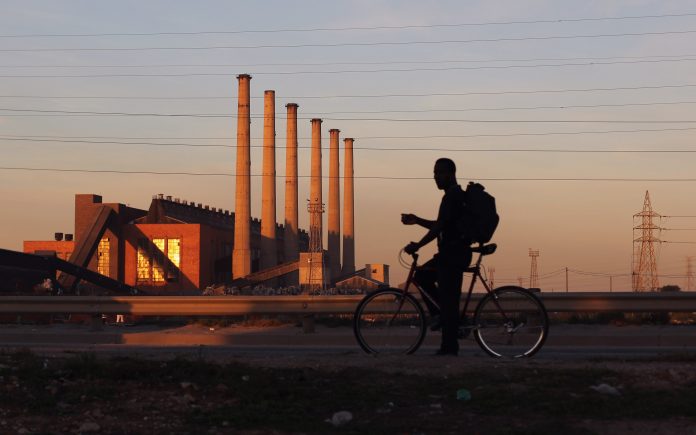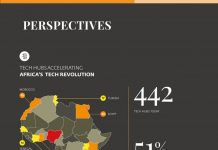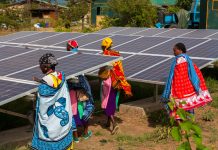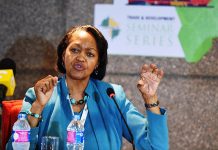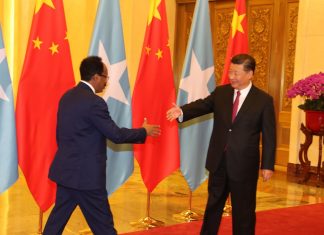The White House: Office of The Press Secterary
Power Africa has helped transactions expected to generate over 4,100 MW of new, cleaner power generation throughout sub-Saharan Africa reach financial close. When fully on line, this additional generation has the potential to enable an estimated 4 million new connections through increased availability of power. Through Power Africa’s Off-Grid Challenge and the U.S.-Africa Clean Energy Finance initiative (ACEF), the U.S. Government has funded projects expected to yield an additional 1 million new connections.
Delivering on U.S. Government Commitments
Two years after the launch of Power Africa, several U.S. Government departments and agencies have fulfilled their original 5-year Power Africa commitments and have announced expanded Power Africa commitments.
· The Overseas Private Investment Corporation (OPIC) expects to exceed its original $1.5 billion commitment by the end of 2015, which is expected to mobilize an additional $1.4 billion in private capital. OPIC has announced an additional $1 billion commitment through 2018.
· The Millennium Challenge Corporation (MCC) expects to commit nearly $2 billion by the end of 2015, nearly doubling its original $1 billion commitment. MCC is implementing power compacts in Ghana and Malawi, and is developing energy sector programs in Benin, Liberia, Sierra Leone, and Tanzania.
· The U.S. Agency for International Development (USAID) has placed over 25 advisors across sub-Saharan Africa who are tracking over 24,000 MW of projects for potential support and providing technical support to improve the enabling environment for private sector investment. USAID, through its Development Credit Authority, has mobilized $171 million in private finance in support of power projects, with a pipeline of over $300 million in new projects.
· The U.S. Trade and Development Agency (USTDA) has provided over $17 million towards 29 projects that are expected to add over 660 MW to the continent’s power supply and leverage an anticipated $3.8 billion in private and public financing, or over $200 for every $1 spent. USTDA plans to commit an additional $10 million in project planning assistance to help early-stage clean energy projects achieve financial close and implementation.
· The U.S. Africa Development Foundation (USADF), in partnership with USAID and GE Africa, has exceeded its $2 million commitment, awarding 28 grants for a total of $2.8 million in grant support in Rounds I and II of the Power Africa Off-Grid Energy Challenge. USADF is unleashing the power of local African entrepreneurs to test business models utilizing renewable energy for productive uses, from micro-grids to biogas and more.
· The Department of Energy is expanding the Clean Energy Solutions Center which is connecting policymakers in Africa with energy experts around the world, as well as expanding technical training for government officials in Djibouti, Ethiopia, and Kenya on geothermal, and on as natural gas in East Africa.
· The Department of State is providing technical assistance and is working with African governments to promote and advance regulatory and policy reforms that stimulate private investment in the power sector.
The Power of Partnerships
Power Africa has forged strategic partnerships with African governments, multilateral development banks, bilateral partners, and more than 100 private sector partners to maximize our impact and accelerate private sector investment in renewable energy.
Power Africa’s initial $7 billion commitment has already mobilized more than $20 billion in private sector commitments to invest in power generation and distribution across Sub-Saharan Africa. Power Africa’s public sector partners, including the African Development Bank (AfDB), the World Bank Group and the Government of Sweden have collectively committed an additional $9 billion in support of Power Africa. On July 14th, the European Union (EU) and Power Africa announced a new partnership at the Financing for Development Conference, through which the EU committed to fund more than $2.8 billion in sustainable energy activities across sub-Saharan Africa.
Two years after launching Power Africa, we have mobilized commitments by public and private Power Africa partners to invest nearly $32 billion for power generation across sub-Saharan Africa.
Power Africa’s Partnerships at Work: Notable Transactions
During the President’s visit to sub-Saharan Africa, a series of new Power Africa transactions and energy sector activities were announced:
· MCC will sign a compact with Benin that will deliver a $375 million long-term program aimed at transforming its power sector through policy reform, private sector participation in generation, and infrastructure investment. The compact will finance up to 78 MW of power generation capacity (equivalent to one-third of Benin’s national demand), including 45 MW of utility-scale solar power; off-grid electrification distribution network improvements; and Benin’s ambitious policy reform and institutional strengthening program.
· OPIC has reached critical milestones on four priority projects, including commitments for two large wind projects in Kenya, a thermal project in Senegal, and a thermal project in Ghana, which are collectively expected to generate more than 700 MW of power generation in sub-Saharan Africa.
· USTDA announced funding for new early-stage project planning activities that will help additional clean energy projects reach financial close, including a 50 MW solar photovoltaic plant in Nigeria and a 2 MW mini-grid solution developed in Tanzania, as well as a market assessment of battery storage technologies that can enable renewable generation continent-wide and a clean energy technical advisor for the Development Bank of South Africa.
U.S.-Africa Clean Energy Finance Initiative (ACEF)
Since ACEF’s launch in 2012, with $20 million in grant-based funding from the Department of State, OPIC and USTDA have supported 32 renewable energy projects across 10 African countries to expand access to clean energy and mitigate greenhouse gas emissions. These projects have the potential to generate more than 300 MW of new renewable power in sub-Saharan Africa and mobilize more than $1.3 billion in project capital, a leverage ratio of $65 for every $1 in ACEF funding. In August 2014, the Department of State committed an additional $10 million to ACEF, bringing its total support for the program to $30 million. To date, two OPIC ACEF-supported projects — Gigawatt Global’s 8.5 MW solar project in Rwanda and PAMIGA’s micro-lending program for solar home systems — have received full debt financing.
Expanding Access & Energy Markets “Beyond the Grid”
During the Global Entrepreneurship Summit, President Obama attended a Beyond the Grid fair to see first-hand the entrepreneurial efforts of Power Africa partners and grantees who work to provide access to electricity for underserved and peri-urban communities off the grid.
· USADF and USAID, in partnership with GE Africa, announced $1.3 million in new grants to entrepreneurs in Ethiopia, Ghana, Kenya, Liberia, Nigeria, and Tanzania. USADF also expanded the challenge to three new countries – Rwanda, Uganda and Zambia. Taken together, Round III of the Power Africa Off-Grid Energy Challenge consists of grants to 22 African entrepreneurs, for new funding totaling $2.2 million.
· USAID’s Development Credit Authority announced a $75 million loan portfolio guarantee to support off-grid companies across sub-Saharan Africa. This facility is poised to bring debt financing to manufacturers, distributors, retailers, and installers of renewable energy technologies, in addition to pay-as-you-go solar companies for the first time, demonstrating their commercial viability and helping to meet the enormous demand for distributed renewable energy across the continent.


